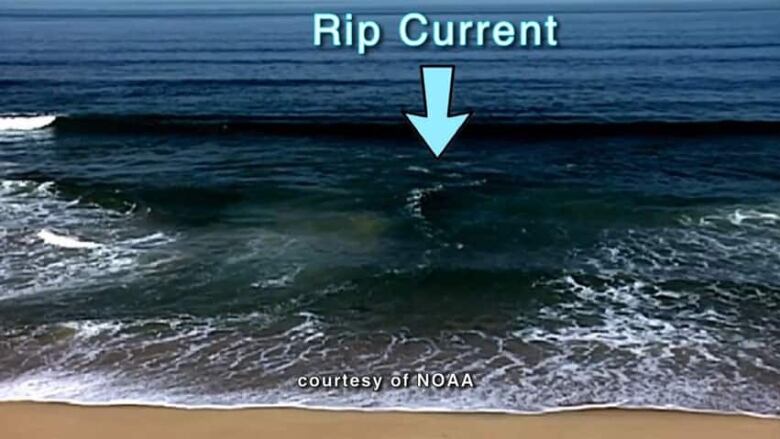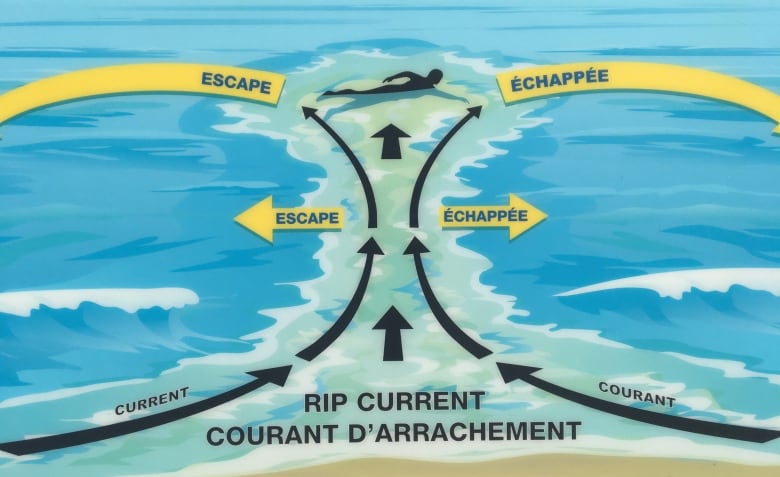Swimmers beware 'extremely dangerous' rip currents with beach season in full swing
Rip current researcher warns against trying to swim to shore when caught in one

When you hit the beach for a swim this summer, watch out for dangerous rip currents that can carry you offshore very quickly.
A rip current, or commonly referred to by its misnomer rip tide, is a fast flowing current of water that's moving offshore in a channel.
"It's extremely dangerous," said Chris Houser, a rip current researcher at University of Windsor.
He said there are rip currents in the Great Lakes system, and especially in Lake Michigan where there are a "large number of drownings per year."
Houser has even spotted them atColchesterBeach.
He said they are difficult to spot for the untrained eye, but can look like a darker body of water, or in between two breaking waves. The water may look the calmest there, but it is actually the "most dangerous."
They can also exist along structural riffs in the water, where you can see water alongside the structure moving offshore.

And when swimmers are caught in something like that, the natural instinct may be to swim back to shore, but they would only be trying to fight a very strong current, adds Houser.
"You need to relax, get your feet up figure out what is parallel to the beach," said Houser. Swimmers need to swim parallel to the beach or just "float it out," until they get to a spot where the water is safe for them to go back to shore.
Changing weather conditions also make it harder for people to realize the true danger of the water they're in.
Earlier in the day they may be able to stand in that water and it's fine, but with changes in winds or big waves that come through, it could look very different later in the day.
"What was safe this morning is no longer safe this afternoon," he said.
With files from Windsor Morning












_(720p).jpg)


 OFFICIAL HD MUSIC VIDEO.jpg)
.jpg)



























































































